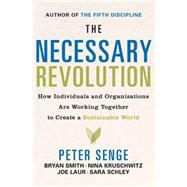
Note: Supplemental materials are not guaranteed with Rental or Used book purchases.
Purchase Benefits
What is included with this book?
PETER SENGE, senior lecturer at MIT and the founding chair of the Society for Organizational Learning (SoL), is the author of several bestselling books, including The Fifth Discipline and Schools That Learn. BRYAN SMITH, coauthor with Senge of Schools That Learn and two other Fifth Discipline fieldbooks, is a member of the faculty at York University’s Sustainable Enterprise Academy, and president of Broad Reach Innovations, Inc. JOE LAUR and SARA SCHLEY are directors of SoL’s Sustainability Consortium, and partners at Seed Systems, Inc,. a leading sustainability consulting firm.
| Endings, New Beginnings | |
| A Future Awaiting Our Choices | p. 3 |
| How We Got into This Predicament | p. 14 |
| Life Beyond the Bubble | p. 33 |
| New Thinking, New Choices | p. 42 |
| The Future is Now | |
| Never Doubt What One Person and a Small Group of Co-Conspirators Can Do | p. 57 |
| Aligning an Industry | p. 68 |
| Unconventional Allies: Coke and WWF Partner for Sustainable Water | p. 77 |
| Getting Started | |
| Risks and Opportunities: The Business Rationale for Sustainability | p. 101 |
| Positioning for the Future and the Present | p. 119 |
| Getting People Engaged | p. 140 |
| Building Your Case for Change | p. 157 |
| Seeing Systems | |
| The Tragedy and Opportunity of the Commons | p. 168 |
| Spaceship Earth | p. 179 |
| Seeing Our Choices | p. 196 |
| Collaborating Across Boundaries | |
| The Imperative to Collaborate | p. 227 |
| Convening: "Get the System in the Room" | p. 234 |
| Seeing Reality Through Others Eyes | p. 250 |
| Building Shared Commitment | p. 267 |
| From Problem Solving to Creating | |
| Innovation Inspired by Living Systems | p. 285 |
| Unleashing Everyday Magic | p. 292 |
| You Don't Have to Have All the Answers | p. 302 |
| From Low-Hanging Fruit to New Strategic Possibilities | p. 310 |
| It's Not What the Vision Is, It's What the Vision Does | p. 324 |
| Redesigning for the Future | p. 334 |
| The Future | |
| The Future of the Corporation | p. 348 |
| The Future of Enterprise Variety | p. 356 |
| The Future of Leadership | p. 364 |
| The Future of Our Relations | p. 374 |
| The Future of Us | p. 378 |
| Appendix | p. 382 |
| Notes | p. 387 |
| Index | p. 400 |
| Table of Contents provided by Ingram. All Rights Reserved. |
The New copy of this book will include any supplemental materials advertised. Please check the title of the book to determine if it should include any access cards, study guides, lab manuals, CDs, etc.
The Used, Rental and eBook copies of this book are not guaranteed to include any supplemental materials. Typically, only the book itself is included. This is true even if the title states it includes any access cards, study guides, lab manuals, CDs, etc.
Excerpted from The Necessary Revolution: How Individuals and Organizations Are Working Together to Create a Sustainable World by Peter M. Senge, Joe Laur, Sara Schley, Bryan Smith, Nina Kruschwitz
All rights reserved by the original copyright owners. Excerpts are provided for display purposes only and may not be reproduced, reprinted or distributed without the written permission of the publisher.